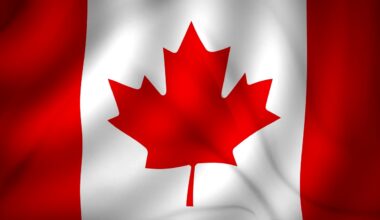Canada’s immigration scene continues to evolve, with specific sectors experiencing acute labor shortages that create enhanced opportunities for skilled foreign workers. Understanding which occupations teer classifications are in highest demand can significantly improve your chances of receiving an Invitation to Apply (ITA) through Express Entry’s category-based selection system and potentially qualify your spouse for an open work permit. Additionally, being aware of relevant teer classifications can help tailor your job search effectively.
Canada’s Economic Immigration Priorities for 2025
For 2025, the focus of the federal economic class draws will be to invite candidates with experience working in Canada (Canadian Experience Class) to apply for permanent residence. Additionally, to meet Francophone immigration targets and meet the acute needs in health, trades and education, Immigration, Refugees and Citizenship Canada (IRCC) has restructured its approach to prioritize specific sectors experiencing critical labor shortages.
The federal government’s strategic focus reflects Canada’s urgent need to address workforce gaps in essential sectors while maintaining economic growth and stability.
Understanding the various teer classifications is crucial for navigating Canada’s immigration processes effectively.
Understanding Category-Based Express Entry Selection
Category-based draws provide targeted pathways for skilled workers in priority occupations. To qualify for these specialized invitation rounds, candidates must demonstrate at least six months of continuous, full-time work experience in an eligible occupation under the National Occupational Classification (NOC) system.
Category-based draws will continue, with one to two per month, emphasizing candidates in Healthcare, Trades, and French-language proficiency, making these sectors particularly attractive for prospective immigrants seeking enhanced chances of selection.
Canada’s Top Priority Sectors Based on Job Vacancy Data
Many of the priority sectors align with specific teer classifications, allowing skilled workers to target their applications more strategically.
Recent labor market analysis reveals the sectors experiencing the most significant workforce shortages, creating optimal opportunities for foreign workers:
Healthcare remains Canada’s most critical sector, with persistent shortages across multiple specializations. The sector encompasses a broad range of opportunities from frontline medical professionals to support staff and specialized technicians.
Key Healthcare Occupations for Express Entry:
| Occupation | NOC Code | TEER Level |
|---|---|---|
| Registered Nurses and Psychiatric Nurses | 31301 | 1 |
| General Practitioners and Family Physicians | 31102 | 1 |
| Licensed Practical Nurses | 32101 | 2 |
| Medical Laboratory Technologists | 32120 | 2 |
| Pharmacists | 31120 | 1 |
| Physiotherapists | 31202 | 1 |
| Nurse Aides and Patient Service Associates | 33102 | 3 |
| Medical Laboratory Assistants | 33101 | 3 |
2. Skilled Trades and Construction
Identifying the right teer classifications can enhance your chances during the application process.
The construction and trades sector continues experiencing significant labor shortages, with the federal government implementing targeted measures to address these gaps. This sector offers numerous pathways for both Express Entry and provincial nomination programs.
Priority Trades Occupations:
Many skilled trades fall under specific teer classifications, making it easier to align with provincial recruitment needs.
| Occupation | NOC Code | TEER Level |
|---|---|---|
| Electricians | 72200 | 2 |
| Plumbers | 72300 | 2 |
| Carpenters | 72310 | 2 |
| Welders and Related Machine Operators | 72106 | 2 |
| Heavy Equipment Operators | 73400 | 3 |
| Construction Managers | 70010 | 0 |
| Heating/Refrigeration Mechanics | 72402 | 2 |
3. Agriculture and Food Services
While experiencing high vacancy rates, this sector provides more limited pathways for spousal work permits but remains important for category-based selection.
Notable Occupations:
- Cooks (NOC 63200) – Trades category
- Butchers (NOC 63201) – Agriculture and agri-food category
Provincial Job Vacancy Landscape
The job vacancy rate in Canada was 2.8% and the unemployment-to-job vacancy ratio was 3.1 in April 2025, with significant provincial variations creating strategic opportunities for job seekers.
Provinces with Highest Job Vacancy Rates:
Understanding the job market along with the relevant teer classifications is essential for a successful job search.
| Province | Job Vacancy Rate | Immigration Advantage |
|---|---|---|
| Manitoba | 3.3% | Strong PNP opportunities |
| Saskatchewan | 3.3% | Robust provincial draws |
| British Columbia | 3.1% | Tech and healthcare focus |
| Quebec | 3.1% | French-language advantage |
Provinces with Lower Competition:
| Province | Job Vacancy Rate | Employment Landscape |
|---|---|---|
| Newfoundland and Labrador | 2.1% | Limited opportunities |
| New Brunswick | 2.3% | Moderate competition |
| Prince Edward Island | 2.5% | Smaller job market |
| Ontario | 2.5% | High competition |
Spousal Open Work Permit Eligibility
Recent policy changes have significantly restricted spousal open work permit eligibility, making it crucial to understand which occupations still qualify your spouse for work authorization.
TEER 0 and 1 Occupations
For effective immigration strategy, consider the implications of your occupation’s teer classifications.
Spouses of workers in management and professional occupations (TEER 0 and 1) remain eligible for open work permits without sectoral restrictions.
Restricted TEER 2 and 3 Occupations
Effective January 21, 2025, family open work permits (OWPs) for international students will be restricted to the spouses or common-law partners of students currently enrolled in specific programs, while foreign worker spouses face new limitations.
Familiarity with teer classifications can provide insights into job market trends and eligibility for work permits.
TEER 2 Healthcare Occupations Eligible for Spousal Permits:
Many healthcare roles and other professions are governed by their respective teer classifications, which are key for immigration eligibility.
| Occupation | NOC Code |
|---|---|
| Animal Health Technologists | 32104 |
| Dental Hygienists and Therapists | 32111 |
| Medical Laboratory Technologists | 32120 |
| Medical Radiation Technologists | 32121 |
| Paramedical Occupations | 32102 |
| Respiratory Therapists | 32103 |
TEER 2 Trades Occupations Eligible for Spousal Permits:
| Occupation | NOC Code |
|---|---|
| Bricklayers | 72320 |
| Carpenters | 72310 |
| Electricians (except industrial) | 72200 |
| Gas Fitters | 72302 |
| Industrial Electricians | 72201 |
| Machinists | 72100 |
| Plumbers | 72300 |
| Welders | 72106 |
Important Exclusions
Spouses of workers in accommodation and food services sectors (TEER 2 or 3) are NOT eligible for open work permits, regardless of job vacancy rates in these sectors.
Understanding these teer classifications can also aid in anticipating job market shifts.
Recent Express Entry Activity and Trends
Immigration, Refugees and Citizenship Canada (IRCC) has issued more invitations to apply (ITA) through the Express Entry system. The immigration department issued 202 ITAs in a draw for Provincial Nominee Program (PNP) candidates, demonstrating continued activity in the system despite shifting priorities.
The current immigration strategy emphasizes candidates with Canadian work experience while maintaining targeted draws for priority sectors including healthcare, trades, and French-speaking applicants.
The connection between sector demands and teer classifications is becoming increasingly important in immigration strategy.
Strategic Recommendations for Prospective Immigrants
For Healthcare Professionals
Healthcare workers enjoy the strongest pathway to Canadian immigration, with multiple entry points through Express Entry, Provincial Nominee Programs, and enhanced spousal work permit eligibility.
For Skilled Trades Workers
The expanded trades category provides numerous opportunities, particularly in provinces experiencing acute construction labor shortages. Many trades occupations also qualify spouses for open work permits.
For Provincial Strategy
Consider targeting provinces with higher job vacancy rates (Manitoba, Saskatchewan, British Columbia) where employment prospects and provincial nomination opportunities may be more favorable.
For Spousal Considerations
If spousal work authorization is important to your family’s settlement plan, prioritize occupations in healthcare or trades sectors that maintain spousal work permit eligibility under current restrictions.
By aligning your skills with appropriate teer classifications, you can enhance your immigration prospects.
Conclusion
Canada’s 2025 immigration priorities clearly favor healthcare and trades professionals, reflecting critical labor market needs. Job vacancies dropped to 524,300 in Q1 of 2025—down by 20,600 from the previous quarter and 116,100 year-over-year. But this decline brings job openings close to pre-pandemic norms, indicating a stabilizing but still active job market with continued opportunities for skilled foreign workers in priority sectors.
Ultimately, a clear understanding of teer classifications will guide your planning and application process for immigration.
Success in Canada’s current immigration scene requires strategic alignment with federal priorities, understanding provincial variations, and careful consideration of spousal work permit implications when planning your family’s immigration journey.
Sources:




